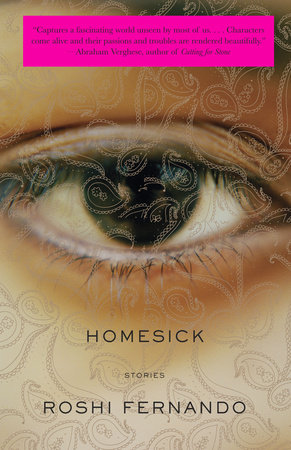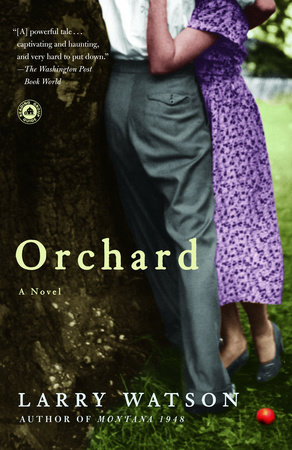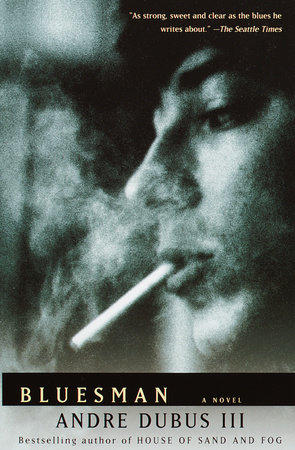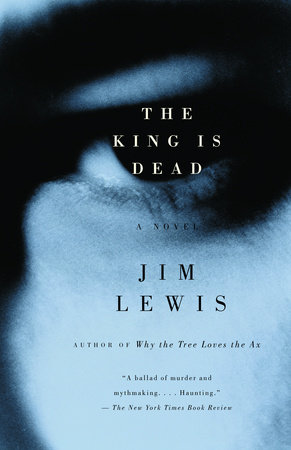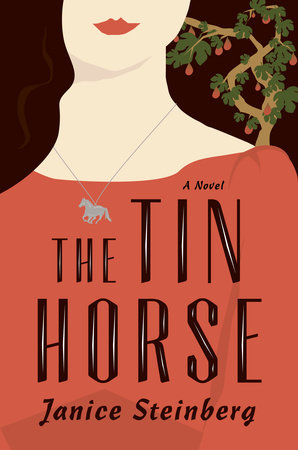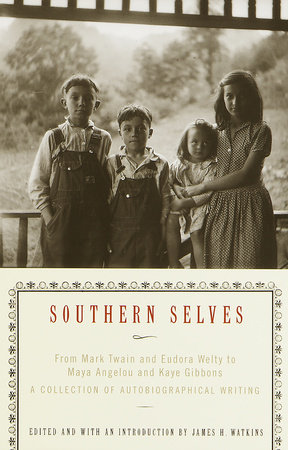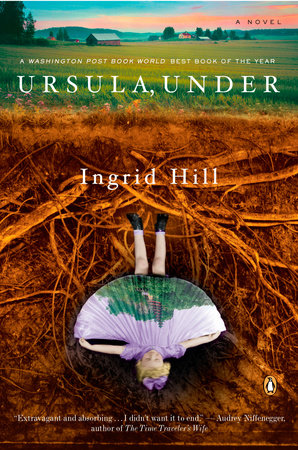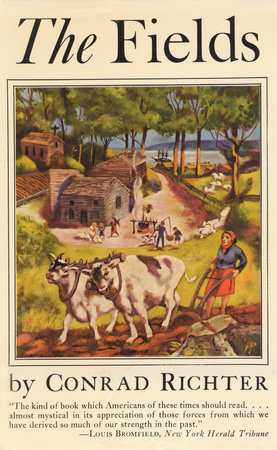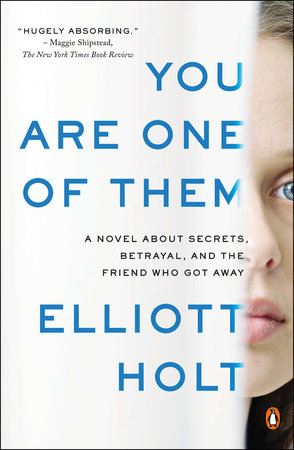A CONVERSATION WITH LARRY WATSON
Random House Reader’s Circle: You tell the story through a timid and unnamed narrator. Was he modeled after anyone? At times he is likeable, yet ultimately he betrays his best friend. What relationship did you have with the narrator while writing? How do you think the reader should react to his actions?
Larry Watson: I’m strongly tempted to duck this question, because the narrator–timid and traitorous, as the question suggests–is based on me. We grew up in similar neighborhoods in Bismarck, North Dakota. We both lived within view of the state capitol building, and in childhood came to know that distinctive structure well. We both graduated from Bismarck High School. (He’s from the class of 1963; I’m from 1965.) We both attended the University of North Dakota, and we both became fiction writers. Each of us in adolescence fell in love with a girl who had been dating our best friend. In fact, the narrator is one of two characters in the novel with a real-life counterpart. Anyone who knew my wife, Susan, when she was younger (or, for that matter, who knows her now) will almost certainly identify her as the model for Marie Ryan. I seldom base my characters so closely on people from life, but these two characters in Sundown, Yellow Moon are exceptions.
I suppose I could console myself because the question also applies the word “likeable” to the narrator, but I’ve already read reviews, met with book clubs, and heard from readers who have said they find the narrator unlikeable. I can live with those opinions, and I understand why readers respond to the narrator in that way. He lives too much in his head and too much in the past. He is calculating and self-absorbed. But he is also punished for his failings. The man who looks back on his life and tells this story–these stories–is haunted and anguished. I, of course, escaped his unhappy condition. I never broke up with my Marie Ryan; my wife and I have been happily married for more than forty years. There are other essential differences. I never had a neighbor who was an assassin and committed suicide, or had a friend who was a murderer’s son, and no matter the extent to which fictional characters might be based on real people, they can’t be the same people when their experiences are different.
This is a long way of saying that the narrator is and isn’t me. Even when a writer works from the actual, the very act of writing produces an aesthetic and an emotional distance that guarantees the written version will differ from its real-life analogue. The narrator and I also share a reverence for the writer William Maxwell who wrote in So Long, See You Tomorrow that “in talking about the past we lie with every breath we draw.” That strikes me as a little strong, since “lie” to me suggests an intent to deceive. It would be more accurate, in my view, to say that our memory always lies to us. But then fiction is a lie to get at the truth.
RHRC: The entire town of Bismarck, North Dakota, becomes obsessed with Raymond’s murder and suicide and, of course, his motives. You grew up in Bismarck. Was it how you portrayed it in the book? Was there an instance in your youth that inspired this story? What is it about this landscape that you wanted to bring to the reader?
LW: The correlation between the Bismarck of the novel and the “real” Bismarck is similar to the correlation between the narrator and me. I wrote about a place that resembled a real place but whose true existence was in my imagination. For the purposes of the novel I altered a few facts about the city, and I’m sure my memory altered others. Nevertheless, the real Bismarck of the early 1960s was, I believe, comparable to the Bismarck of the novel in that they were both fairly conservative, largely middle class, and somewhat repressed homogeneous communities, removed in many respects from the rest of the nation by climate and geography. One of the ironies of the novel is that Bismarck is brought out of its isolation and anonymity by an act of violence. There have been, unfortunately, too many real-life instances of communities made famous, however briefly, by the violence that has occurred within their borders. In that regard, it should be noted that Sundown, Yellow Moon takes place not only in a small city on the northern plains but also in America. From the political assassinations of the 1960s to last year’s insane slaughter on the Virginia Tech campus, Americans have had event after gruesome, grievous event that have forced us to ask again and again who we are as a people and why we live in such a culture of violence.
RHRC: First loves, first lovers, childhood friendships, and people’s past relationships are big themes in this book. How do you think each relationship affects the next? Which relationship in the story was primary for you? Which one did you feel contained the crux of the story?
LW: I do believe in the power and durability of first love, but whether that early relationship lasts, as my wife’s and mine has, or doesn’t, it’s still capable of forming a template that many people apply to subsequent relationships. These people spend a good part of their lives seeking to find a partner with whom they can recapture the passion, purity, and intensity of a youthful love affair. This is the predicament of the narrator of Sundown, Yellow Moon. Because of that, I regard his relationship with Marie Ryan as the crux of the story. To the end of his days the narrator will long for something he once had but can never have again. And he knows it.
RHRC: Raymond Stoddard’s motives for the murder of Monty Burnham and his suicide are never revealed. Do you believe there is a single motive? Did you write it with a clear answer in mind? The protagonist seems to believe it was jealousy. Do you agree? Do crimes always need motives?
LW: I didn’t write Sundown, Yellow Moon with an answer in mind as to Raymond Stoddard’s motive. I never doubted that he would have one, or more than one, but the desire to know what is ultimately unknowable–what was going on Raymond Stoddard’s heart and mind–obsesses not just the narrator but other characters in the novel.
Jealousy is plausible as a motive, but of course, the narrator is drawn to that as an explanation because he himself is prone to jealousy. I had hoped that one of the ways readers would participate in the novel would be through examining their own personalities and by speculating on how that examination would lead them toward certain explanations. But it would be a brave, introspective reader willing to do that.
Yes, I believe that crimes always have motives, no matter how irrational, crazed, twisted, or inadequate they may be.
RHRC: Sundown, Yellow Moon contains many short stories written by the protagonist, who is a writer himself. How did you come up with the idea?
LW: Almost immediately after the murder and suicide, the narrator struggles to comprehend what has happened. Such acts are beyond puzzling; they’re inexplicable. But that doesn’t stop people from trying to understand and explain them. Reason won’t provide answers, so the narrator tries to imagine his way into lives that are otherwise closed to him. At first this activity takes place only in his mind, but that signals the beginning of his life as a writer. It made sense to me that he would continue to do that throughout his life, though, as for any artist, at some point the aesthetic demands of making a good art object–a short story, in this case–takes precedence over the personal stimulus that initially moved him toward making that object in the first place. Artists are, in my opinion, people finally more interested in making than knowing. The narrator of Sundown, Yellow Moon has a dramatic past that provides him with all the raw material he needs for a lifetime of stories. I thought that, by including his stories in the text, readers would be able to see how his imaginative mind works. Do we know him any better through reading those stories? I believe we do.
RHRC: When you began writing this story, what were you hoping to accomplish? What did you want to find out or share with your readers? You also speak directly to the reader. What did you set out to accomplish with this technique?
LW: I could never be classified as a postmodernist, fabulist, or metafictionist, but anyone who writes fiction as long as I have is bound to notice some self-consciousness about the practice creeping into his thoughts. And while I’m dug in too deeply in the realist trenches (and am too devoted to story) to write a novel that is entirely a self-reflexive riff on the nature of narrative, I am interested in conducting fictional experiments and in attempting to see whether I can challenge the borders of fiction–without losing readers in the process, of course. In Orchard I tried a nonchronological form. And in Sundown, Yellow Moon I tried to address some fundamental questions about stories, such questions as Where do stories come from? Why do humans need them? What uses do we make of stories? How do fictional truths differ from other varieties? What is the relationship between memory and imagination? So in the writing of Sundown, Yellow Moon I was aware that I was a writer remembering and imagining his past and in the process writing about a writer remembering and imagining his past. But I didn’t want this to be an exercise in academic theorizing or in navel-gazing; I wanted, as I always want, a story that would engage, entertain, and move readers, and in the process provoke some thought. Addressing readers directly was a way, I hoped, to indicate that they and I were in this together.
RHRC: Do you have a writing routine or any rituals surrounding your work? How long was it after you first had the idea for this story before you started writing it?
LW: I don’t have routines or rituals that must be followed–no necessity for twenty sharpened pencils or a pot of Earl Grey tea. I can work in any place and at any time as long as I have the materials at hand. But I do make sure that I work on a novel– producing new material, not just reworking old–every day. I will probably also make a journal entry, and I might work on a poem, an essay, or a short story. But I must work on a novel every day without fail. I began writing Sundown, Yellow Moon almost as soon as the idea came to me.
RHRC: What are you working on now?
LW: I’ve been working on a novel set, once again, in the early 1960s, and for this novel, whose working title is The Doctor’s Boys, I’ve returned to Montana. A teenage boy has become infatuated with a woman a few years older than he. In pursuing her, he finds himself in competition with a charismatic, powerful man, a doctor in the community.






